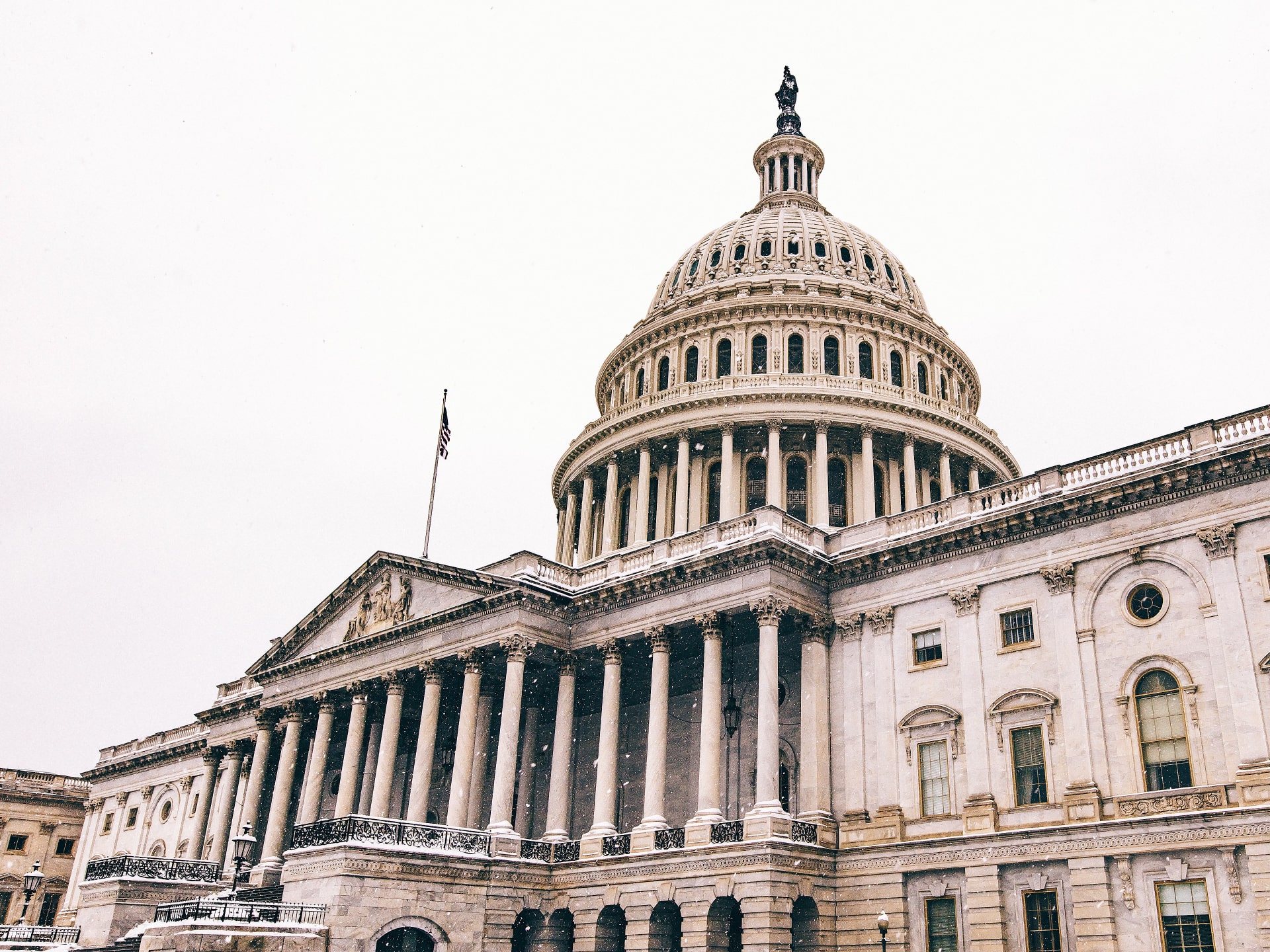The legislative branch has a lot to cover and is always taught first, meaning it can easily take time away from teaching the other two branches.
But with a few targeted activities, you can cover both the structure and powers of Congress and the process for how a bill becomes law in just a couple of weeks.
So included here are some of my favorite lessons and activities for teaching the legislative branch in my high school Civics and Government class. But first, let’s go over the basics of Congress and what exactly it does.
What does the Legislative Branch Do?
The legislative branch is the center of a democracy.
It was the United States’ only branch of government under the Articles of Confederation. When Washington, D.C., was built, the U.S. Capitol, where Congress meets, was used as the city’s directional center. The branch’s building is the literal cornerstone of our government.
The U.S. calls its legislative body Congress. Other nations use the parliament system, which is very similar. Both systems tend to be bicameral, which means consisting of two halves. Congress is made up of the House of Representatives and the Senate.
Congress’s main purpose is to pass legislation to keep the nation functioning and, ideally, to improve it. The types of things Congress can make laws about are explicitly listed in Article I, Section 8.
Each house has additional responsibilities. House members serve as the direct link to constituents. They are who you can contact if you’re struggling with the federal government. They are meant to be more connected to everyday Americans.
Senators, on the other hand, are considered more elite. There are fewer of them, they serve longer terms, and they have additional prestigious duties like confirming presidential appointments and approving treaties.
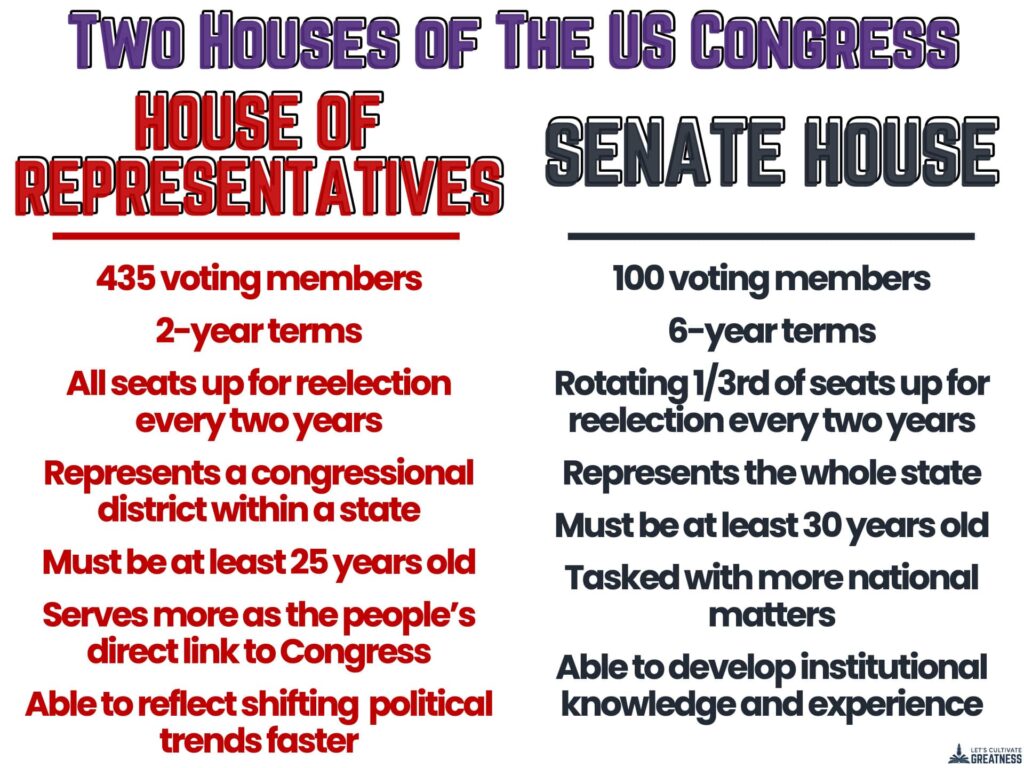
Decide how much time you can dedicate to this branch. I spend about three weeks teaching about Congress. Below are my essential activities and ways to expand on them if you have more time.
If you’re starting from scratch and need everything, you can grab all these lesson activities as a done-for-you unit kit.
Lesson Ideas for Teaching the Legislative Branch
First, since this branch is usually taught after the other two, don’t let those other branches make you run out of time. That inherently sends the message it’s not as important.
That said, I spend about 3 weeks teaching the judicial branch. Head to my store to grab these lesson activities for yourself as a done-for-you unit kit.
1. Differentiate between the House & Senate
First, give students a copy of Article I, Sections 2 and 3 to see the two chambers’ differences. This is a great way to kick off deep thinking by having students guess the reasoning and impact these differences create.
I also show photos of our US Representative, two US Senators, and a congressional district map of our state. This helps make it more real.
If you have the time, contact your representative’s office to see if you can visit their local office or have their legislative aids be guest speakers. I have found their offices to be incredibly helpful.
Lastly, to help introduce this branch, students analyze a few short excerpts from the Anti-Federalist essay Brutus No. 16 and the opposing Federalist Papers No. 52 and No. 64. These help you pose inquiry questions on the vastness of Congress’s powers and how democratic its setup is.
I weave in the excerpts throughout my lecture slides as we cover the branch, but you could also hand out paper copies to analyze.
2. Examine How a Bill Becomes Law
This topic makes a great sorting activity since it’s a long list of steps. And it’s even longer when you include how the legislative process works in the real world, not just what the Constitution says.
One way to do this is to hand out a deck of cards for small groups to arrange the steps on their tables. Another is to give each student one card and challenge the class to form a human timeline.
I like to do a question trail with stations and codes to crack. It’s a simplified escape room-style activity that reinforces the steps and vocabulary involved. I detail the activity in this blog post.
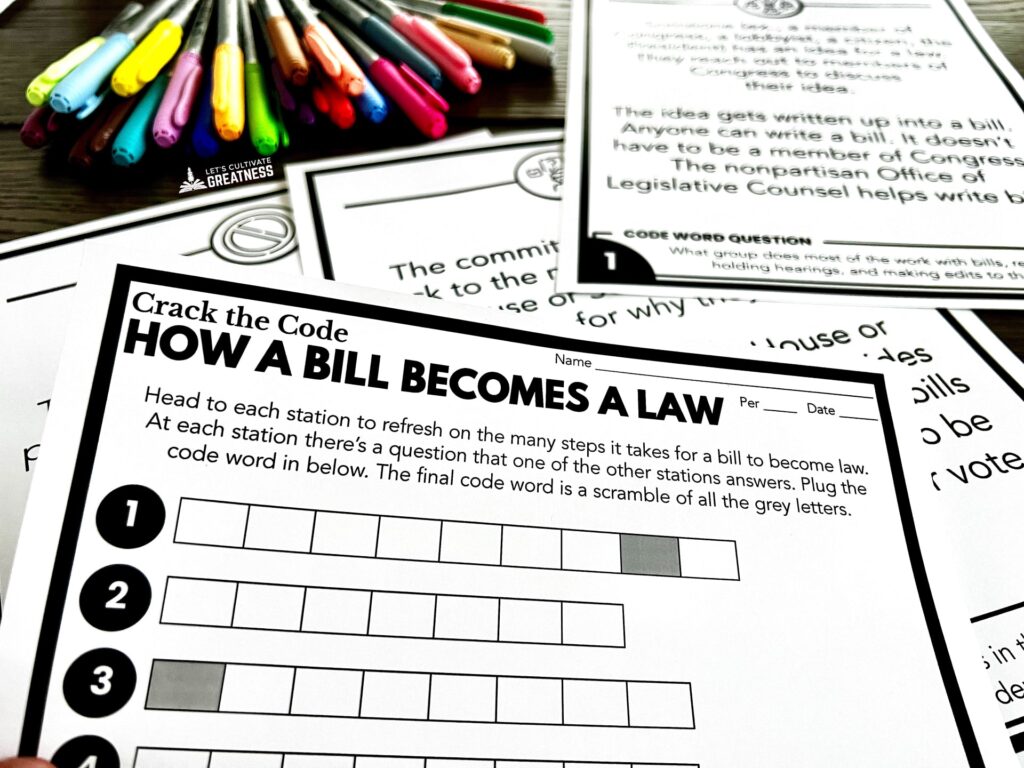
After examining how laws are really made, we watch the famous Schoolhouse Rock “I’m Just a Bill” video. Students now can clearly see how it portrays an idealistic version that is only partially accurate. Your students may enjoy this tongue-in-cheek “updated” version by Politico.
If you have time, take a quick look at current bills in Congress, discussing what stage they’re in and their topics.
3. Analyze the Powers of Congress
Since there are so many powers, I like teaching this as a stations activity. First, be sure to do a quick overview of them, either by examining the Constitution’s text (Article I, Section 8) or a slide show.
For each station, I pick a federal law that neatly demonstrates one of the powers.
One I use is the 2021 Music Modernization Act, which clarifies copyright in music streaming and falls under Congress’s expressed power to protect artists’ work. Students read a summary, answer a few high-level questions, and then decide which power allowed Congress to pass that law.
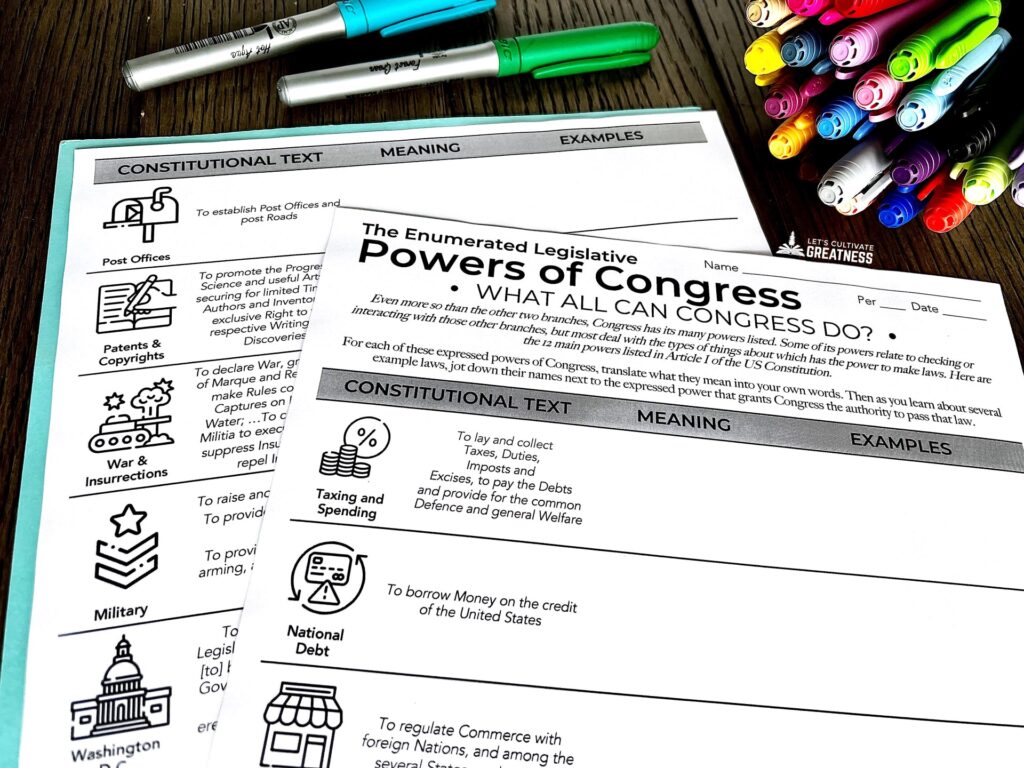
I like how this uses real laws as examples, and it illustrates how bills sometimes follow interesting paths—being vetoed on their first attempt, being upheld by the Supreme Court, etc.
Head over to this blog post for more details on this activity.
4. Research Members of Congress
At the end of our legislative branch unit, I like students to research the real people who make up the current Congress—the members who represent them and the whole of the House and Senate.
You can do this in two ways: by doing some light research on these individuals, creating a one-pager gallery walk, and examining the demographic statistics for the current Congressional session.
Even though they can’t vote, students are very interested in the people who have been elected to represent them. And have strong feelings if they feel represented or not by them.
Have students research members for their personal, educational, and professional backgrounds as well as which bills they have sponsored and positions they take on issues.
Or, challenge students to find the statistical breakdown of various demographics, such as race, gender, and party affiliation, in the current Congress and the American public. Kids are often surprised by how off some statistics are and how others match pretty well.
5. Research a Debated Issue
I culminate my Civics course with a Constitutional Issues research project. One of the topics I let students choose is the fascinating debate of whether Washington, D.C., should be granted statehood.
Unlike admitting other new states, which doesn’t require an amendment, this one would since the Constitution states that Congress controls the capital.
I turn this essay project into a PBL by having students pretend they are White House advisers who must prepare a presidential report on whether the president should endorse this amendment or not.
And that’s it! Between these several activities, you’ve covered the branch and related standards well in just a few weeks.
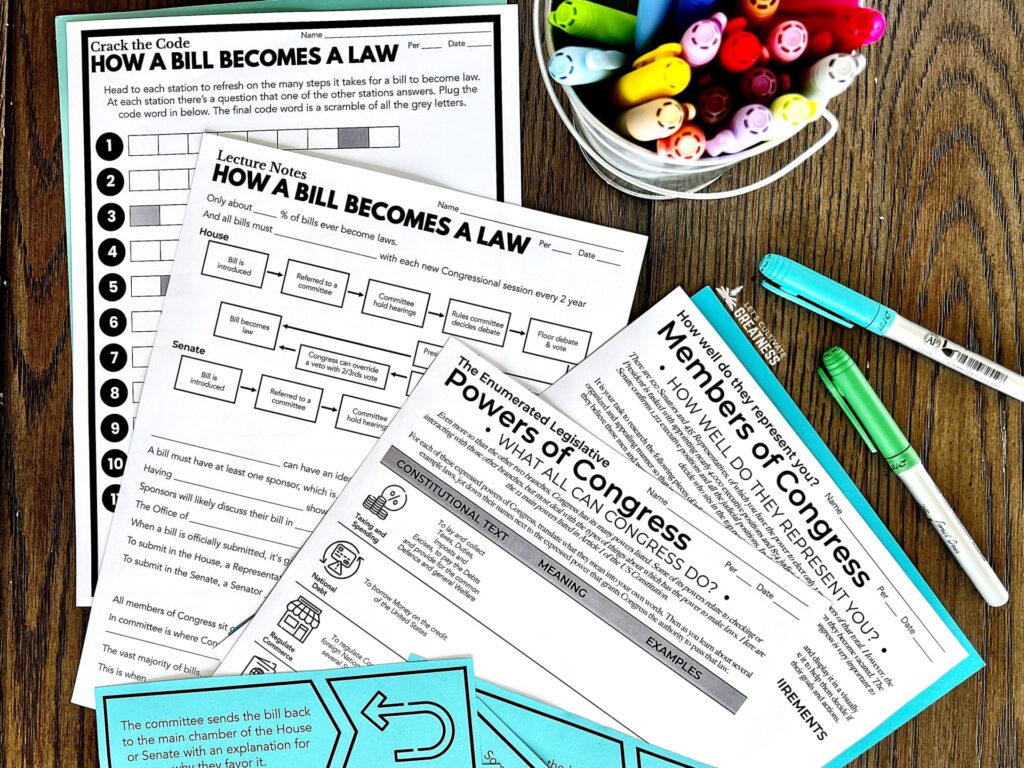
Check out my Legislative Branch unit bundle for all the activities mentioned, which you can also purchase individually to plug and play into your existing middle or high school Civics and Government course.
Feature image photo credit: Caleb Fisher

